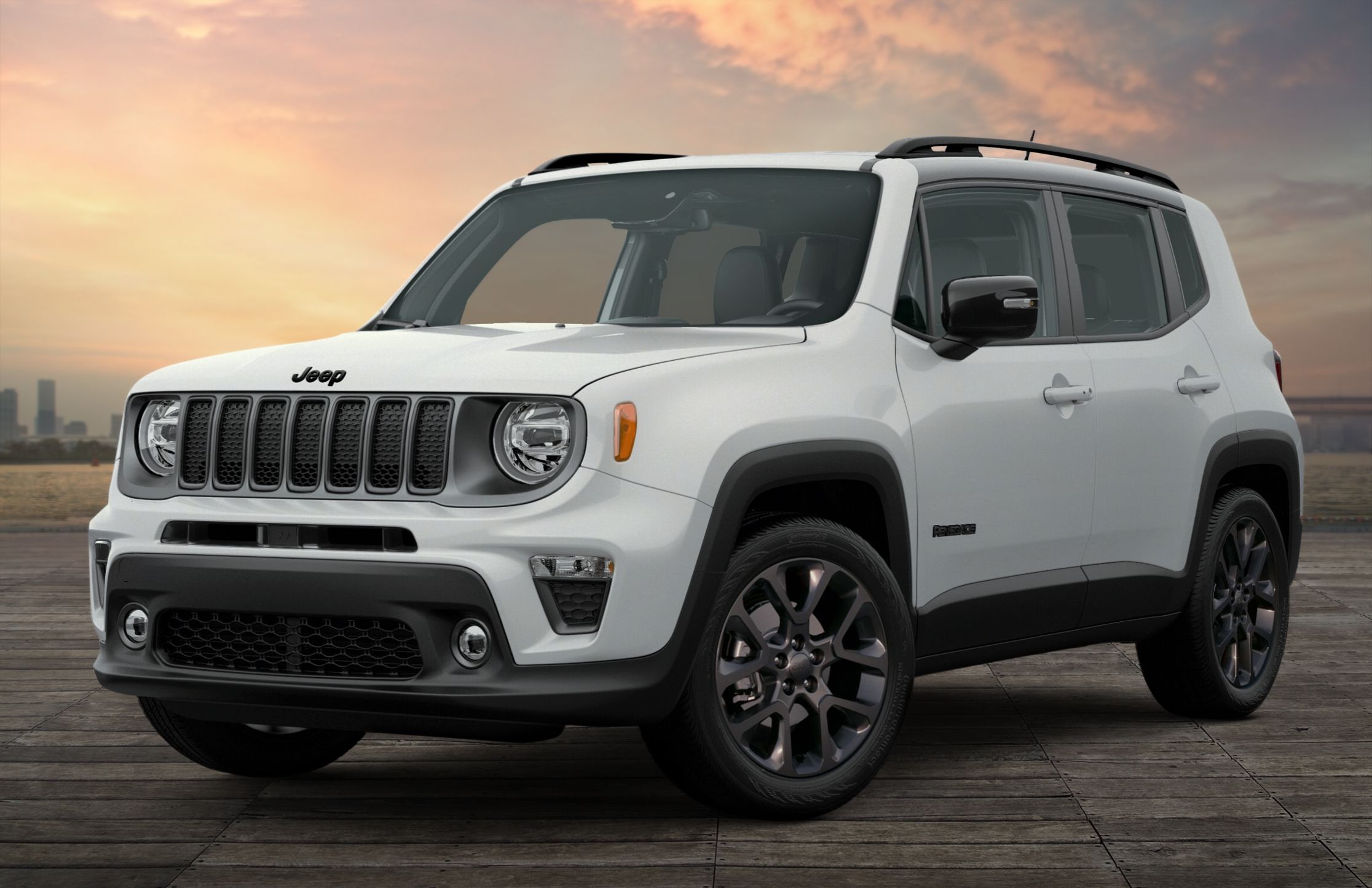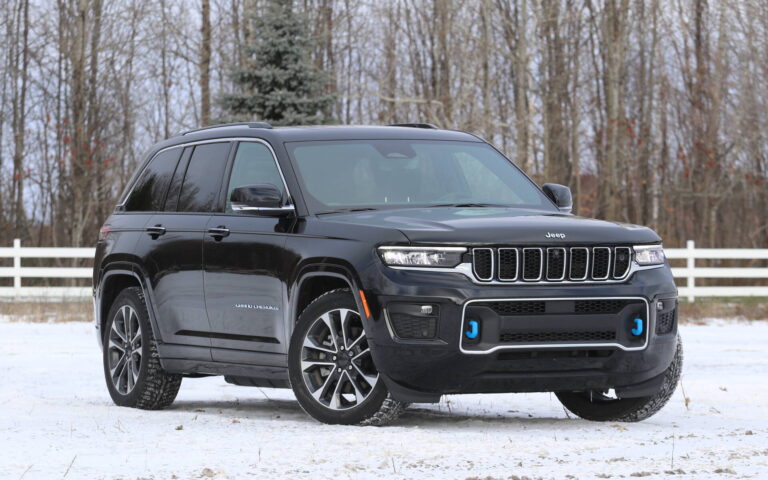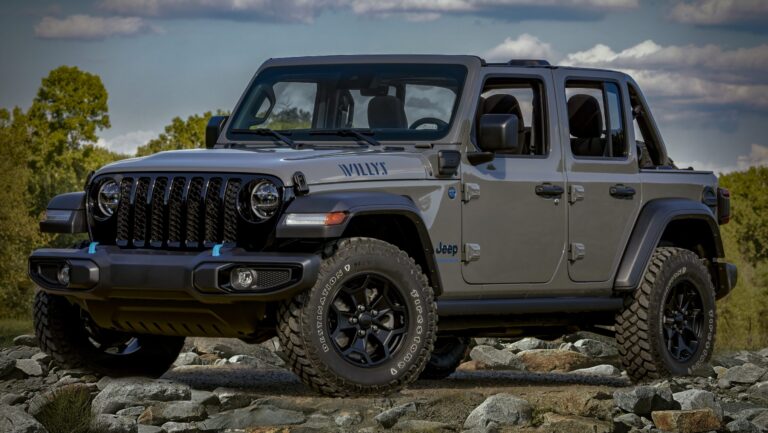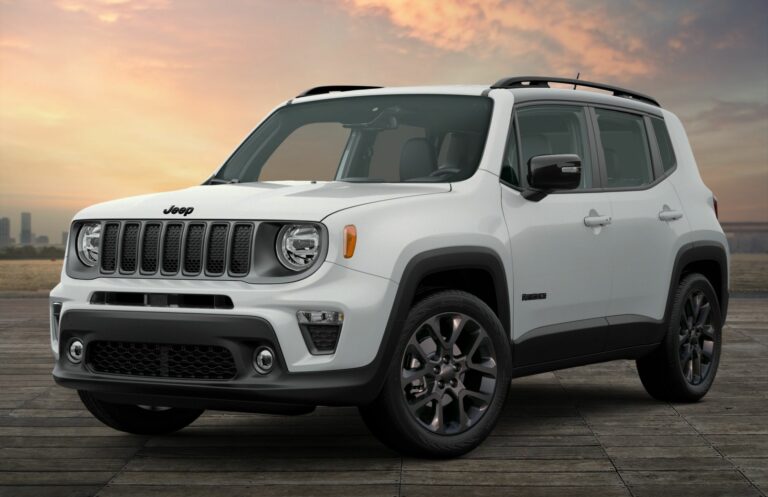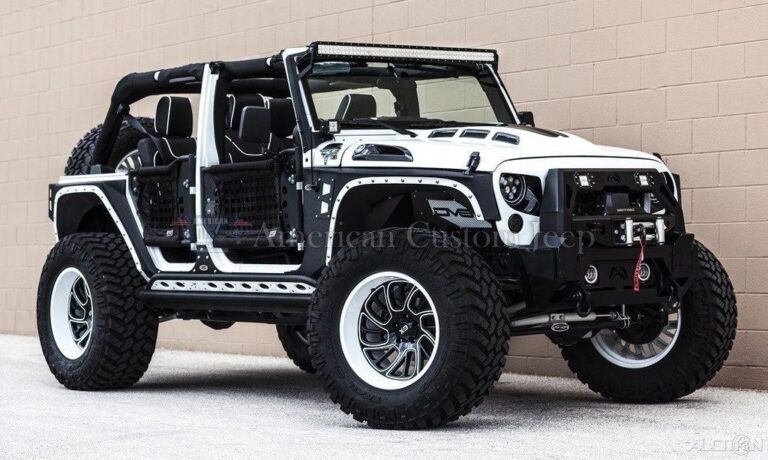Jeep Stroker For Sale: Unleashing the Beast Within Your Wrangler or Cherokee
Jeep Stroker For Sale: Unleashing the Beast Within Your Wrangler or Cherokee jeeps.truckstrend.com
For any dedicated Jeep enthusiast, the pursuit of more power and torque is an almost primal urge. While V8 swaps offer undeniable brute force, they often come with significant complexities regarding fitment, wiring, and drivetrain compatibility. Enter the "Jeep Stroker"—a highly sought-after and ingeniously engineered solution that amplifies the beloved AMC-derived inline-six engine (most commonly the 4.0L) to deliver substantially more grunt, all while largely retaining the original engine’s character and footprint. When you see a "Jeep Stroker For Sale," it’s not just a vehicle; it’s an opportunity to acquire a performance-enhanced machine, purpose-built to conquer tougher trails, tow heavier loads, or simply provide a more exhilarating daily driving experience. This comprehensive guide will delve into what a stroker is, why it’s a desirable upgrade, what to look for when buying one, and essential considerations to ensure you make an informed purchase.
Jeep Stroker For Sale: Unleashing the Beast Within Your Wrangler or Cherokee
What Exactly is a Jeep Stroker?
At its core, a Jeep stroker engine is an inline-six that has undergone a significant internal modification to increase its displacement beyond the factory 4.0 liters. This is primarily achieved by combining components from different AMC inline-six engines. The most common stroker builds utilize the longer crankshaft and connecting rods from the earlier 4.2-liter (258 cubic inch) AMC inline-six engine (found in older CJs, YJs, and full-size Jeeps) within the more modern 4.0-liter block.
Because the 4.2L crank has a longer stroke than the 4.0L crank, custom pistons with a modified compression height are required to prevent them from colliding with the cylinder head at the top of their travel. When combined with boring out the cylinders (e.g., to .030", .060" over), these modifications can transform a 4.0L into a 4.6L, 4.7L, 4.9L, or even 5.0L monster. The result is a significant increase in cubic inches, directly translating to more horsepower and, crucially for off-roading, vastly improved low-end torque.
Why Consider a Stroker Jeep? The Undeniable Advantages
The appeal of a stroker Jeep is multifaceted, addressing various needs and desires of the Jeep community:
- Significant Power and Torque Gains: This is the primary draw. A well-built stroker can add 50-100+ horsepower and even more torque over a stock 4.0L, transforming a sluggish trail rig or a struggling tow vehicle into a potent performer. The increased low-end torque is especially beneficial for rock crawling and technical off-roading, reducing the need for excessive throttle input and preventing stalling.
- Retained OEM Fitment: Unlike V8 swaps that necessitate new engine mounts, transmission adapters, exhaust rerouting, and complex wiring, a stroker largely retains the original engine’s external dimensions. This means existing accessories, exhaust manifolds, and even some stock intake components can often be reused or easily adapted, simplifying the overall conversion.
- Cost-Effectiveness (Relatively): While not cheap, building a stroker can often be more economical than a full V8 swap, especially when considering the peripheral costs associated with the latter (drivetrain upgrades, cooling system, wiring harnesses, etc.). Buying a pre-built stroker often represents a good value compared to commissioning a custom build from scratch.
- Maintained Inline-Six Character: Many Jeep enthusiasts appreciate the unique sound, reliability, and smooth power delivery of the inline-six engine. A stroker enhances these characteristics without losing the essence of what makes the 4.0L so beloved.
- Enhanced Drivability: Beyond off-roading, the added power and torque make daily driving more enjoyable, especially for Jeeps equipped with larger tires or heavier armor. Highway cruising becomes less strained, and acceleration is noticeably improved.


Key Components of a Stroker Build: What’s Under the Hood?
Understanding the core components of a stroker build helps in evaluating a "Jeep Stroker For Sale":
- Crankshaft: Typically from a 4.2L (258ci) AMC engine, which has a longer stroke than the 4.0L. It’s often reground or balanced for optimal performance.
- Connecting Rods: Also usually from the 4.2L, though some high-performance builds might use aftermarket rods of specific length.
- Pistons: Custom-made pistons are essential. They have a shorter compression height to compensate for the longer stroke and prevent valve-to-piston contact. The bore size (e.g., .030", .060" over) determines the final displacement.
- Block Preparation: The 4.0L block must be bored and honed to accommodate the larger pistons. Decking (machining the top surface) might also be done to ensure optimal head gasket sealing and compression.
- Cylinder Head: While the stock 4.0L head can be used, performance is greatly enhanced by porting and polishing, larger valves, and stronger valve springs to improve airflow.
- Camshaft: A "stroker-specific" camshaft is crucial. These cams are designed to optimize valve timing for the increased displacement, improving both low-end torque and high-RPM horsepower.
- Fueling System: Larger fuel injectors (e.g., 24lb/hr or more) are necessary to supply enough fuel for the increased air intake. A higher-volume fuel pump might also be beneficial.
- Exhaust System: A performance header and a larger diameter exhaust system (2.5" or 3") are recommended to allow the engine to breathe efficiently.
- Engine Management/Tuning: This is arguably the most critical component. The engine’s computer (ECU/PCM) must be reprogrammed or "tuned" to account for the increased displacement, larger injectors, and new camshaft profile. Without proper tuning, the engine will not run efficiently or reliably.
- Cooling System Upgrades: More power generates more heat. A larger radiator, improved fan clutch, or electric fans are often necessary to prevent overheating, especially in demanding conditions.

Buying a Jeep Stroker For Sale: What to Look For
Purchasing a modified vehicle always carries a certain level of risk. When it comes to a stroker, due diligence is paramount.
1. Complete Vehicle vs. Crate Engine
- Complete Vehicle: This is often the most common scenario for "Jeep Stroker For Sale."
- Pros: Immediate gratification, you get a complete package, and you can test drive it.
- Cons: You’re inheriting someone else’s build, potentially with unknown history or shortcuts. The rest of the vehicle (drivetrain, suspension) may or may not be up to par.
- Crate Stroker Engine: Buying a professionally built, ready-to-install engine.
- Pros: Known build quality (if from a reputable builder), often comes with a warranty. You install it into your own chassis.
- Cons: Higher upfront cost for the engine, and you still need to factor in installation costs and potential supporting modifications for your Jeep.
2. Verification of Build Quality and Documentation
- Documentation is King: Ask for receipts for parts, machine shop work, and dyno sheets (if available). A reputable builder will keep meticulous records. If the seller can’t provide any, proceed with extreme caution.
- Builder Reputation: Was it a DIY build, or done by a known engine builder or shop? Professional builds often have a higher likelihood of reliability and proper execution.
- Compression and Leak-Down Test: Perform (or have a mechanic perform) these tests. Consistent, high compression across all cylinders and minimal leak-down indicate a healthy engine.
- Oil Pressure: Check oil pressure at idle (when hot) and at higher RPMs. Low oil pressure can indicate worn bearings.
- Visual Inspection: Look for leaks (oil, coolant), excessive smoke from the exhaust (blue for oil, white for coolant), and unusual noises (knocking, ticking).
- Tuning Status: Confirm that the engine has been properly tuned for the stroker configuration. Ask what tuning solution was used (e.g., custom ECU flash, piggyback module).
3. Mileage and Maintenance Records
- Engine Mileage: How many miles are on the stroker engine itself since it was built? A fresh build will have low miles.
- Regular Maintenance: Ask for oil change intervals, type of oil used, and records of other maintenance (cooling system flushes, spark plugs, etc.).
4. Supporting Modifications
A stroker engine puts more stress on the rest of the drivetrain. Ensure these components have been upgraded or are in excellent condition:
- Drivetrain: Is the transmission (manual or automatic) capable of handling the increased torque? Are the transfer case and axles (and their gear ratios) appropriate for the power and tire size?
- Cooling System: A stock cooling system is often inadequate. Look for an upgraded radiator (e.g., aluminum 3-core), heavy-duty fan clutch, or electric fan conversion.
- Fuel System: Verify larger injectors and potentially an upgraded fuel pump.
- Exhaust: A free-flowing exhaust system is vital.
- Suspension/Brakes: While not directly related to the engine, a more powerful Jeep often means it’s used harder. Ensure these systems are robust.
5. The Test Drive
- Cold Start: Listen for any unusual noises.
- Power Delivery: Does it pull strong and smoothly through the RPM range?
- Temperature Stability: Monitor the coolant temperature gauge closely during the drive, especially under load.
- Transmission Shifting: Ensure the transmission shifts smoothly and appropriately.
- Listen, Feel, Smell: Trust your senses. Any odd smells, vibrations, or sounds should be investigated.
DIY Stroker Build vs. Professional Installation vs. Buying Pre-Built
- DIY Stroker Build:
- Pros: Most cost-effective in terms of labor, immense learning experience, ultimate customization.
- Cons: Requires significant mechanical aptitude, specialized tools, a clean workspace, and a lot of time. High risk of errors if not experienced.
- Professional Installation/Build:
- Pros: Expert craftsmanship, often comes with a warranty, saves you time and hassle, higher likelihood of reliability.
- Cons: Most expensive option.
- Buying Pre-Built (Vehicle):
- Pros: Convenience, immediate enjoyment, potentially a good deal if the seller is motivated.
- Cons: Inheriting unknown issues, difficult to verify build quality without extensive inspection.
Potential Challenges and Solutions
- Heat Management:
- Challenge: Strokers generate more heat due to increased power.
- Solution: Upgrade to a larger capacity radiator (aluminum), a heavy-duty fan clutch, or an electric fan conversion. Ensure the thermostat is functioning correctly.
- Fueling and Tuning Issues:
- Challenge: Incorrect air-fuel mixture can lead to poor performance, reduced longevity, or even engine damage.
- Solution: Professional tuning is non-negotiable. Ensure the engine has a proper tune, possibly with a wideband oxygen sensor for accurate feedback.
- Drivetrain Stress:
- Challenge: The increased power can expose weak points in the transmission, transfer case, or axles.
- Solution: Inspect these components thoroughly. Be prepared to upgrade universal joints, axle shafts, or even the transmission if signs of wear are present.
- Emissions Compliance:
- Challenge: Modified engines can sometimes struggle to pass strict emissions tests.
- Solution: Research local emissions laws. A proper tune and functioning catalytic converter are crucial. Some regions may have specific regulations for engine swaps or modifications.
- Cost Overruns:
- Challenge: The initial purchase price might seem attractive, but supporting modifications or unforeseen repairs can quickly add up.
- Solution: Budget for potential upgrades to the cooling, fuel, and drivetrain systems. Factor in a pre-purchase inspection by a trusted mechanic.
Practical Advice and Actionable Insights
- Do Your Homework: Before even looking at a specific Jeep, understand the nuances of stroker builds. Read forums, watch videos, and talk to experienced builders.
- Factor in Supporting Mods: Never assume that just because the engine is powerful, the rest of the Jeep is ready for it. Always budget for potential upgrades to the cooling, fuel, and drivetrain systems.
- Get it Inspected: If you’re serious about a "Jeep Stroker For Sale" (especially a complete vehicle), pay for a pre-purchase inspection by a mechanic specializing in Jeeps or performance engines.
- Don’t Rush: The right stroker will come along. Don’t let excitement override your critical judgment.
- Negotiate Wisely: Use any identified issues or lack of documentation as leverage in negotiations.
Jeep Stroker For Sale: Representative Price Guide
The cost of a Jeep stroker can vary wildly depending on whether you’re buying a complete vehicle, a crate engine, or building it yourself, as well as the quality of components and labor involved. This table provides a representative estimate and should not be taken as fixed pricing. Always research current market values.
| Category | Description | Estimated Price Range (USD) | Key Considerations |
|---|---|---|---|
| Used Jeep with Stroker | Entry-Level/Unknown History: A Jeep with a stroker engine, but limited documentation, high mileage on the build, or signs of DIY shortcuts. | $8,000 – $15,000+ (depending on Jeep model/condition) | High Risk: Thorough inspection and compression/leak-down test are crucial. Assume you’ll need to address deferred maintenance or potentially rebuild parts of the stroker. Often found on older XJs or TJs. |
| Used Jeep with Stroker | Documented/Professional Build: A Jeep with a well-documented stroker build from a reputable shop or enthusiast, receipts for parts/labor, lower mileage on the engine. | $15,000 – $30,000+ (depending on Jeep model/condition & supporting mods) | Moderate Risk: Still requires inspection, but documentation reduces uncertainty. Value is highly dependent on the quality of the stroker build and accompanying upgrades (axles, suspension, etc.). Common for TJs, JKs (with 4.0L swaps), and well-built XJs. |
| Crate Stroker Engine | Budget/Standard Build: A remanufactured 4.0L block with 4.2L internals, often a 4.6L or 4.7L displacement, with basic performance components (cam, pistons, injectors). | $4,000 – $7,000 (Engine only) | Good Value: Provides a solid foundation. Still requires tuning, cooling, and potential exhaust upgrades. Does not include installation labor. Warranty usually applies to the engine itself, not labor. |
| Crate Stroker Engine | Premium/High-Performance Build: Full custom build with ported head, specific camshaft, balanced rotating assembly, higher compression, often 4.9L or 5.0L. | $7,000 – $12,000+ (Engine only) | Top Tier: Designed for maximum performance and longevity. Requires proper tuning and robust supporting modifications (drivetrain, cooling, fuel). May come with a limited warranty. |
| DIY Stroker Build (Parts) | Components Only: Cost of crankshaft, rods, pistons, camshaft, gaskets, fasteners, injectors, tuning solution, and machine shop labor (boring, honing, balancing). | $2,500 – $6,000+ (Parts & Machining Only) | Variable Cost: Depends heavily on whether you source used parts, rebuild existing ones, or buy new aftermarket. Does not include your labor, specialized tools, or potential mistakes. This is the cost for the engine internals and machining. |
| Professional Installation | Labor Only: Cost to remove old engine, install new crate engine, connect accessories, and perform initial startup. | $1,500 – $3,500+ (Labor only) | Adds to Crate Cost: Varies by shop hourly rate and complexity. Does not include any additional parts or custom fabrication (e.g., if cooling system needs major overhaul). Often includes initial tuning or dyno time. |
Frequently Asked Questions (FAQ) about Jeep Stroker For Sale
Q1: Is a stroker engine reliable?
A1: A well-built stroker, using quality components, proper machining, and a professional tune, can be just as reliable as a stock engine, if not more so. Reliability issues typically arise from cutting corners during the build, inadequate supporting modifications, or poor tuning.
Q2: How much power does a stroker add?
A2: Power gains vary significantly based on displacement (4.6L vs. 5.0L), cylinder head work, camshaft selection, and tuning. Generally, you can expect 50-100+ horsepower and even more torque over a stock 4.0L.
Q3: Can I pass emissions with a stroker?
A3: It depends on your local emissions laws and the quality of the build/tune. A properly tuned stroker with a functioning catalytic converter can often pass. However, some regions have very strict visual inspection requirements or specific rules for engine modifications, so always check local regulations.
Q4: What’s the best displacement for a stroker (e.g., 4.6L, 4.7L, 4.9L, 5.0L)?
A4: The "best" depends on your goals. 4.6L and 4.7L are very common and offer excellent performance gains without pushing the limits of the block. Larger displacements like 4.9L and 5.0L offer maximum power but require more aggressive boring, potentially thinning cylinder walls and increasing heat.
Q5: Do I need a new transmission, transfer case, or axles with a stroker?
A5: Not necessarily new, but they must be in good condition and capable of handling the increased torque. A stock AW4 (automatic) or AX-15 (manual) can often cope, but upgrading universal joints, driveshafts, and potentially axle shafts or gearing is often recommended for heavy off-road use to ensure longevity.
Q6: How long do stroker engines last?
A6: With proper break-in, regular maintenance (especially oil changes with quality oil), and a good tune, a stroker engine can last for many tens of thousands of miles, similar to a well-maintained stock engine. Some well-built strokers have exceeded 100,000 miles.
Conclusion
A "Jeep Stroker For Sale" represents a fantastic opportunity to acquire a vehicle with significantly enhanced performance, without the complexities often associated with V8 conversions. Whether you’re a serious off-roader seeking more low-end grunt or simply want a more responsive daily driver, a stroker can deliver. However, the key to a successful purchase lies in thorough research, meticulous inspection, and understanding the complete package—not just the engine itself. By being informed and asking the right questions, you can confidently invest in a powerful, reliable, and truly exhilarating Jeep that will undoubtedly elevate your driving experience on and off the pavement. The roar of a well-tuned stroker is an unmistakable symphony for any Jeep enthusiast, a testament to intelligent engineering and the relentless pursuit of power.

